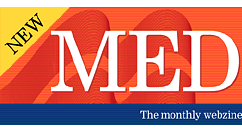 |
 |
 |
 |
 |
 |
|
|
||||
COLUMNS
|
Business English: Email Communicating with people in a business context often requires a more formal style than when writing to friends and family. In the 21st century, the most common form of communication between colleagues is almost certainly email. Because emails are designed for speed, they usually avoid the formal expressions used in letters, relying more heavily on the use of incomplete sentences and abbreviations. Below you can find an example email and notes explaining
its features. Some of the notes also include some useful set phrases often
used in emails.
1 You do not need to begin with a formal greeting. Dear David, David, or even just Hi are all acceptable ways of starting an email. 2 It is very easy to sound abrupt in an email, so a short greeting can help to lighten the tone. 3 Emails are usually written at speed, so people very often do not write in complete or grammatically correct sentences. 4 Abbreviations are also often used to save time. Pls is short for ‘please’, B4 means ‘before’, and asap means ‘as soon as possible’. 5 People often send documents or pictures with the email: these are known as attachments. 6 End your email with something short like Best (short for Best Wishes), Regards, or Yours if you are writing to someone you do not know well. |
|||
|
|
||||